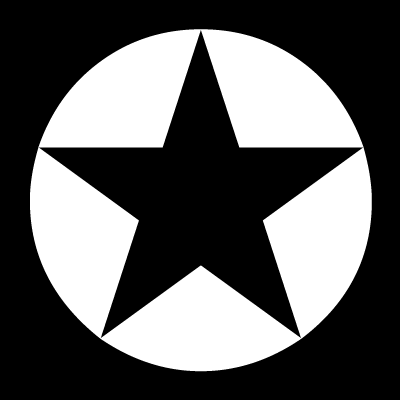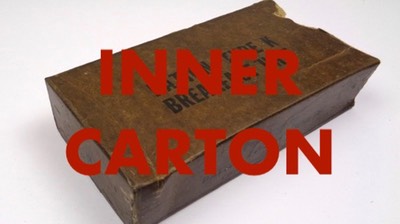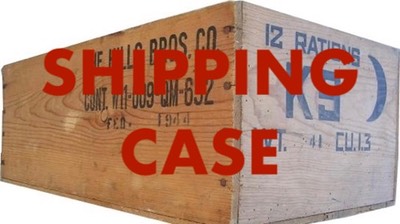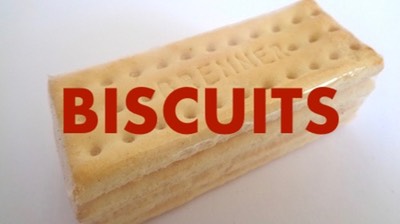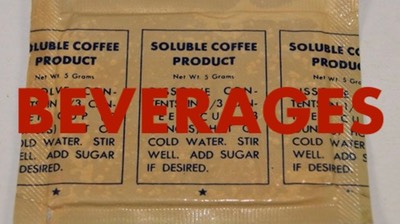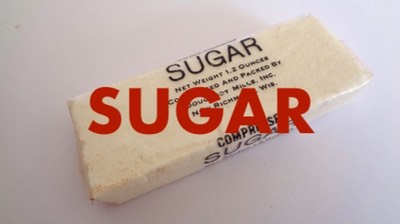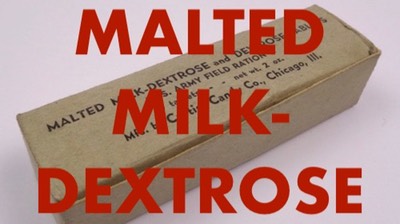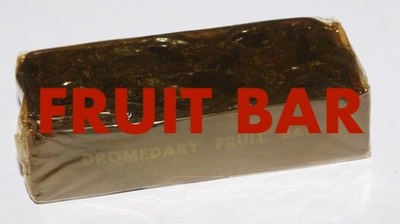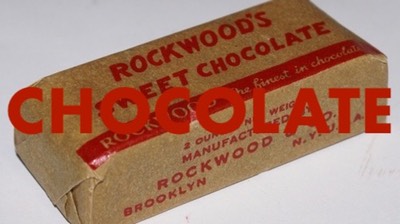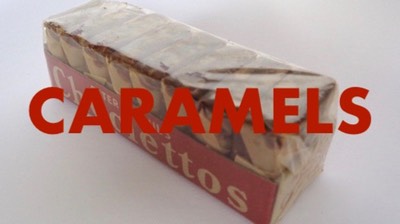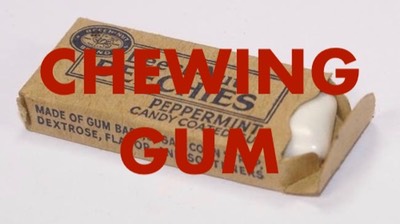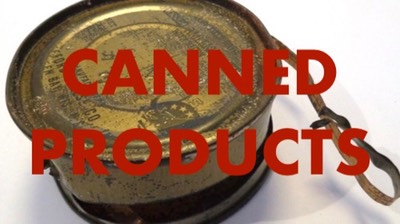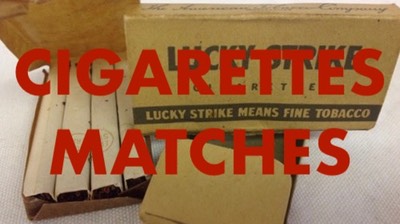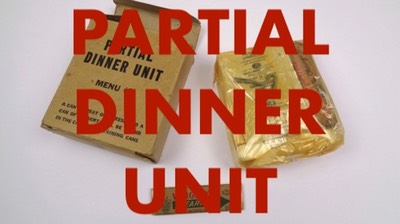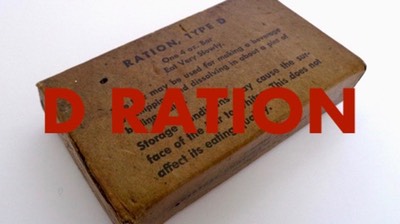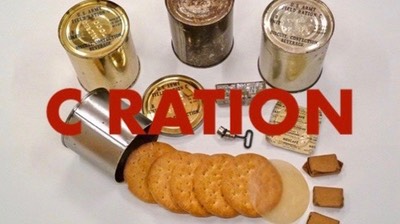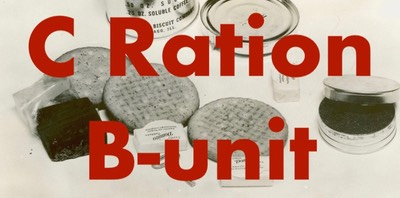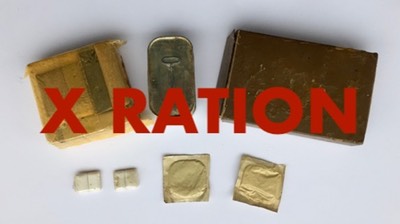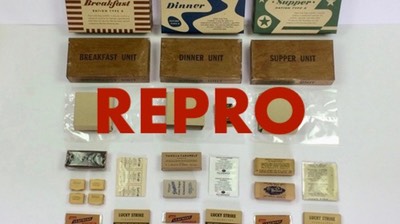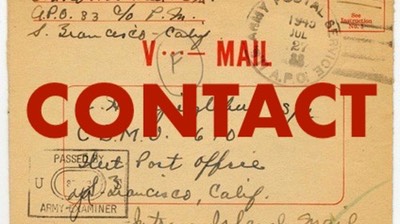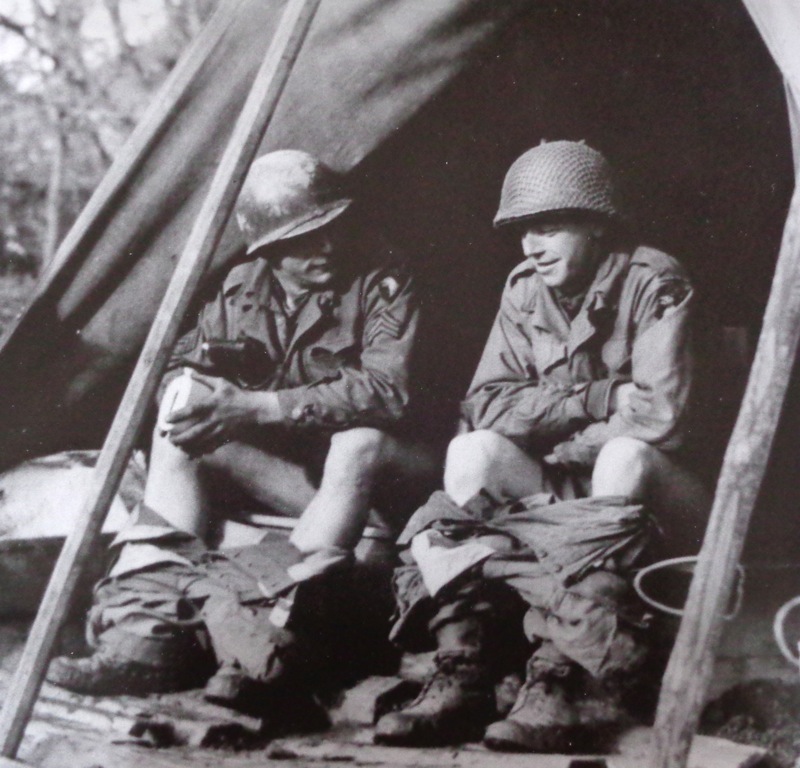
The presence of items which are not foodstuffs, and strictly speaking, non-essential, serves to illustrate the new turn taken by ration research since the beginning of the emergency [the war]: the purpose of combat rations is no longer merely to nourish the men physically, and keep them in fighting trim, but to provide them with every reasonable comfort which can possibly be packed into the small space available.
The first non-food item included in the K Ration were the cigarettes and matches. Soon other suggestions were made and approved.
Toilet paper
At the time that the inclusion of the matches was suggested, the inclusion of toilet paper was also proposed. Although the idea was discussed during the fall of 1942, it was finally included in July 1943.
After careful consideration 12 sheets were found adequate to conduct your business with. These twelve sheets were 5 inches wide and 9 inches long. Being of delicate tissue paper, these sheets were folded in three, thus forming a three-ply sheet measuring 3" by 5". Twelve sheets were stacked and folded over twice, forming a tight package around which a paper band was placed.

One sheet of toilet paper is folded open (top), the remaining 11 sheets (left) showing the folds when doubled twice into a "roll", next to it the paper band and two complete packages.
So far only Waldorf's toilet paper have been found in K Rations. Waldorf was a brand of the Scott Paper Company. The tissue used is of a pea green color tissue paper, and the band around it is made of unbleached paper, varying from an off-white to a brown kraft color. Although only one design for the Waldorf logo is used, it may very a little in size. This is probably due to that paper bands were printed by different companies when more orders were placed.

Three rolls of Waldorf's toilet paper are shown here.
Note the differens in color of the wrappings and the size and quality of the printing. The blue ink appears almost black on brown paper. The tissue paper itself was of constant quality, being produced by the Scott Paper Co. themself.
The toilet paper was included in te Supper unit, taking the place of the three sugar tablets. Soon after, the sugar tablets in the Breakfast and the dinner units were increased to four tablets in both units.
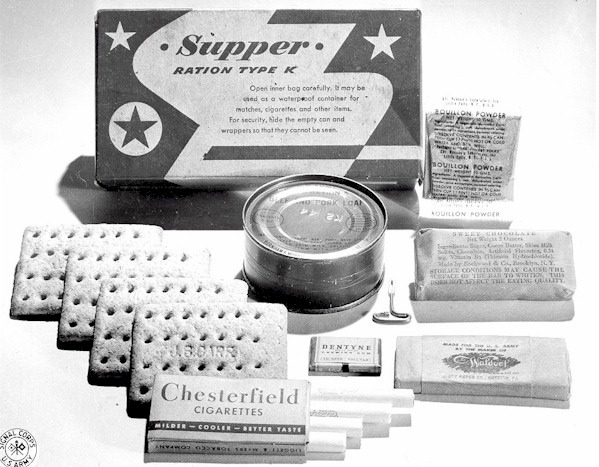
Official Signal Corps photo showing a package of Waldorf's toilet paper together with the other contents of a Supper unit, summer 1944.
In December 1944 it was decided that there should also be coffee with sugar in the Supper unit, supplementing the bouillon drink.
Since one package of biscuits in the Breakfast unit was replaced with a smaller package of a compressed block of cereal, the toilet paper was moved from the Supper unit to the Breakfast unit.
Spoon
A request came for development of a disposable mess kit liner for the K Ration, to improve sanitation in the field. Disposable mess kits, or a liner for the mess kit was never developed, but the idea of some sort of disposable cutlery sounded like a good idea.
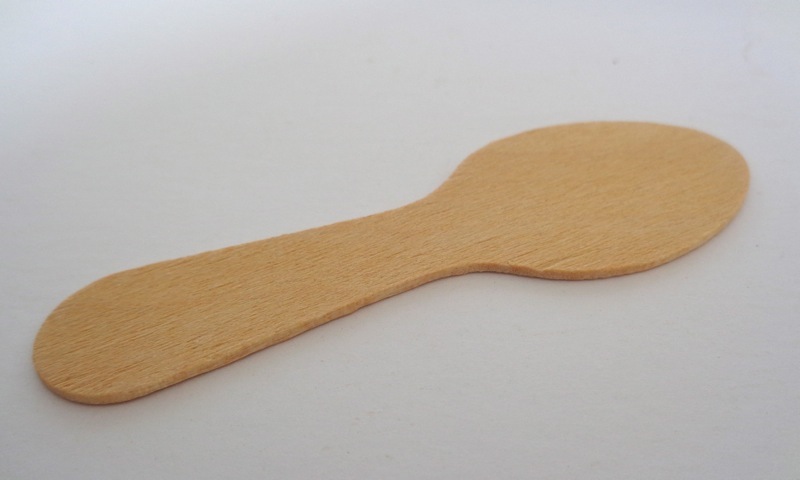
Finally a small wooden spoon (sometimes called a paddle) was developed and included in each unit of the K Ration. This wooden spoon is usually inluded in the cellophane bag with the other components.
The wood used is either Birch, Beech or Maple, free from bark, knots or splinters.
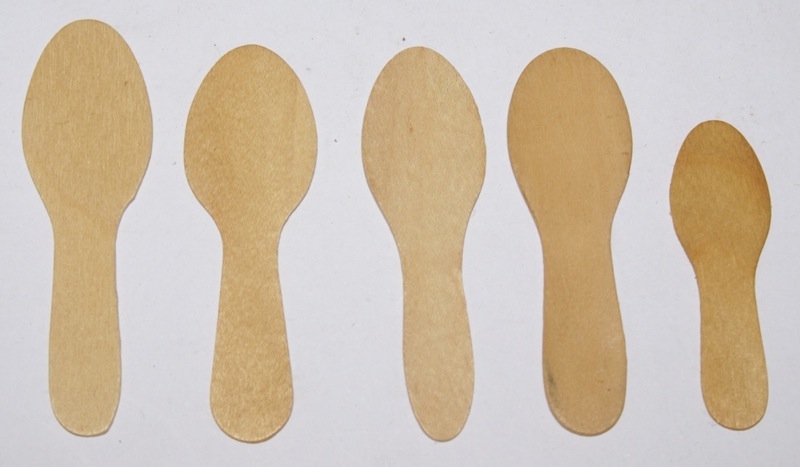
Different shapes and sizes of the wooden spoon found in K Rations. (photo: 1944Supply)
When first used the spoons were placed directly with the other components, but in the summer of 1945 the spoons were sealed inside a paper sleeve and then heated to 160° F for sanitary reasons.
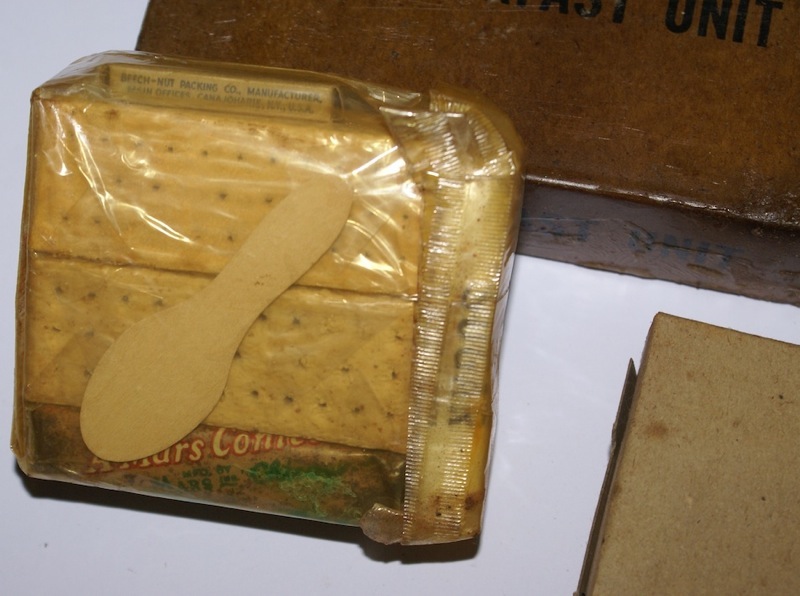
A wooden spoon is sealed inside the cellophane bag with the other components of a 1945 Dinner unit. (photo: 1944Supply)
The spoon was also included in the accessory kit used with the C Ration. No information, however, has been found that the spoon was also placed in the Partial Dinner Unit of the 10-in-1 Ration.
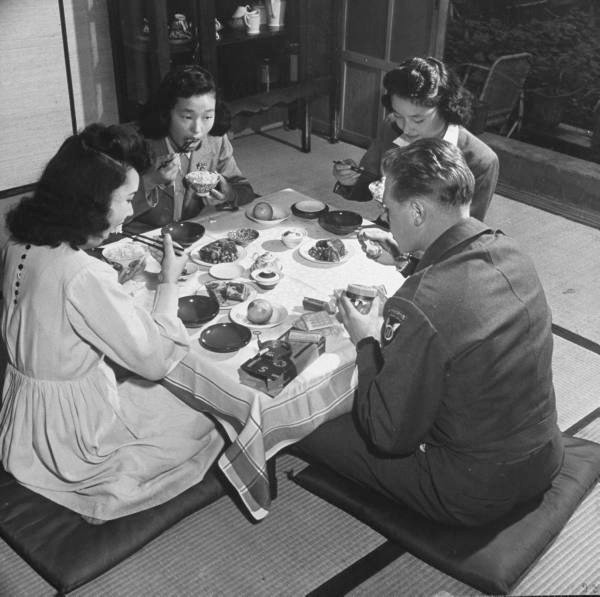
An 11th Airborne trooper of the occupation forces is having dinner with Japanese ladies. Due to food scarce he brought his own food: a Supper unit. Note that he is using the wooden spoon.
Salt tablets & Halazone tablets
Already in 1942 the inclusion of water purification tablets and salt tablets were suggested. It was considered the duty of the medical officer to distribute salt tablets and therefor, the Army reasoned, they should not be included in a field ration.
The US Army had special units to provide the soldiers with potable water in the field. Individual issuance of purification tablets, usually called Halazone tablets, was not considered necessary.
However, especially in the pacific, the use of salt tablets and Halazone tablets became more important. Late 1944 the inclusion of these tablets were considered for inclusion in the K Ration.
Before the tablets could be adopted for use with the K Ration the number of tablets needed for one day had to be calculated, and a suitable packaging for that number would needed to be developed.
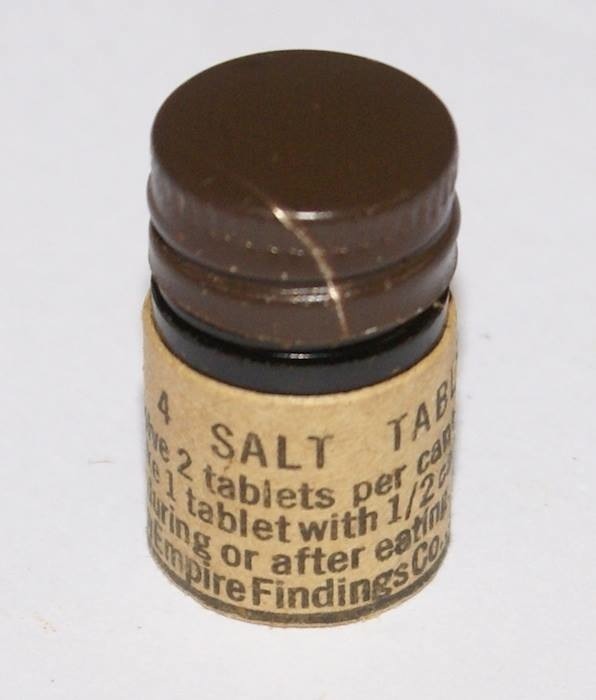
Strangely, this vial with salt tablets was packed inside a 1945 Supper unit. (photo: 1944Supply)
Finally a small plastic vial holding four salt tablets was used. This vial had a cardboard sleeve with instructions printed on it. It is the same vial that was used in the accesory kit of the C Ration. In the summer of 1945 such a vial with salt tablets was placed in the Dinner unit. (One such a vial has been found packed inside a Supper unit, maybe one contracter included it with the wrong units?) The outer box of the Dinner unit now mentions salt tablets in the list of contents.
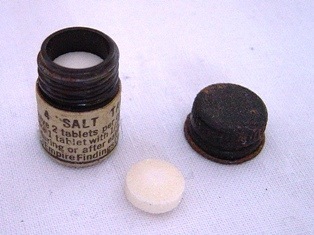
Four salt tablets fitted in the little vial.
The inclusion of Halazone tablets is often mentioned in books and artikels about the K Ration. So far none have been found in a K Ration. Appearently the inclusion of water purification is mentioned in late specifications, but as the production of the K Ration was discontinued, it was never actually included in one of the units.
Probably a small bottle holding either 6 or 12 tablets would have been included in one of the units if the production would have continued. (A small bottle holding 12 Halazone tablets was already included in the C Ration's accessory kit in 1944.)
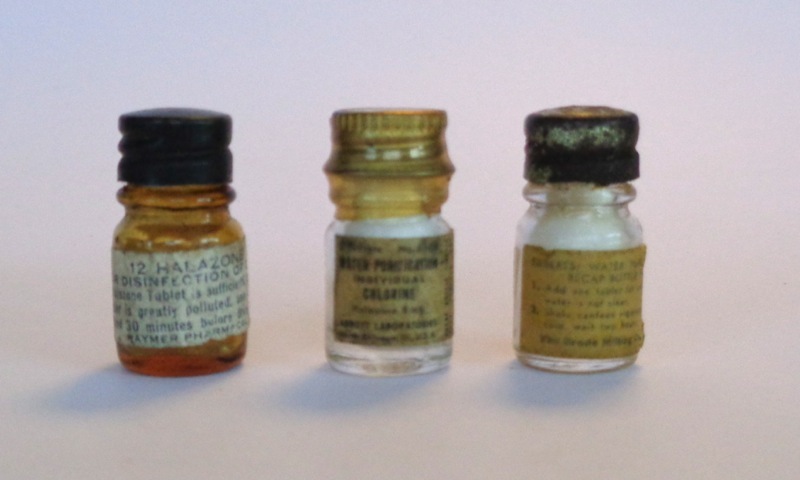
A small amber glass bottle, holding 12 tablets next to two clear glass bottles holding 6 tablets each.
